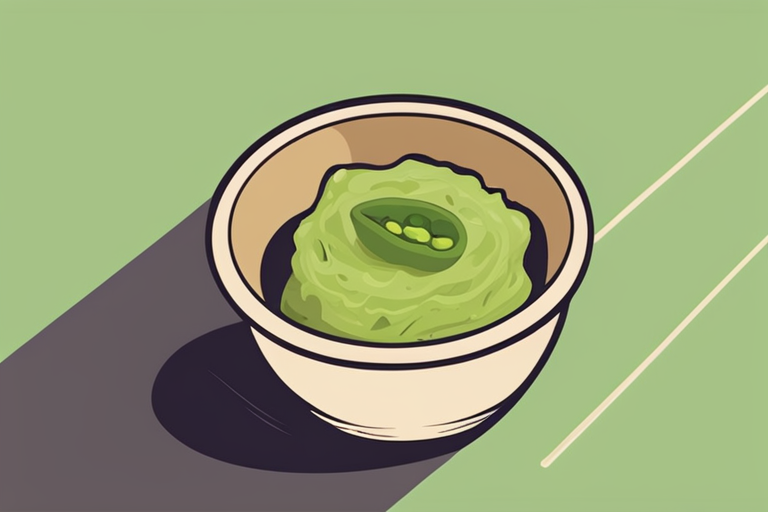
What Happens If You Eat Expired Guacamole
Get Your Free Food Safety Cheat Sheet
30 most common foods with instant answers. Print it and stick it on your fridge—completely free!
What Happens If You Eat Expired Guacamole
Guacamole is a popular and delicious dip made from ripe avocados, onions, tomatoes, lime juice, and seasonings. It's a favorite at parties, Mexican restaurants, and for snacking at home. However, like any perishable food item, guacamole can go bad if not stored properly or if left past its expiration date. In this blog post, we'll explore what happens if you eat expired guacamole and how to safely store and consume this tasty dip.
Understanding Expiration Dates on Guacamole
Guacamole typically has a shelf life of 1-2 days when stored in the refrigerator. The expiration date on store-bought guacamole is a guideline for when the product is at its freshest and safest to consume. Eating guacamole past its expiration date can pose health risks due to bacterial contamination and spoilage.
Signs of Expired Guacamole
Here are some signs that your guacamole may have gone bad:
- Off smell: If your guacamole smells sour, rancid, or off, it's likely spoiled.
- Discoloration: Guacamole should be bright green in color. If it has turned brown or gray, it's best to discard it.
- Mold: Visible mold growth on the surface of the guacamole indicates spoilage.
Risks of Eating Expired Guacamole
Consuming expired guacamole can lead to foodborne illnesses and digestive issues. Here are some risks associated with eating spoiled guacamole:
Bacterial Contamination
- Salmonella: Consuming guacamole contaminated with Salmonella bacteria can cause symptoms like diarrhea, fever, and abdominal cramps.
- Listeria: Listeria contamination in guacamole can lead to flu-like symptoms, nausea, and vomiting, especially in pregnant women, older adults, and individuals with weakened immune systems.
Food Poisoning
- Stomach cramps: Eating expired guacamole can result in stomach cramps, bloating, and discomfort.
- Diarrhea: Spoiled guacamole may cause diarrhea, dehydration, and electrolyte imbalances.
How to Safely Store Guacamole
To prevent your guacamole from spoiling prematurely and posing health risks, follow these tips for safe storage:
- Refrigerate promptly: Store guacamole in an airtight container and refrigerate it within 2 hours of making or buying it.
- Keep it cold: Store guacamole in the coldest part of your refrigerator, ideally at temperatures below 40°F (4°C).
- Use airtight containers: Transfer homemade guacamole to a container with a tight-fitting lid to prevent air exposure.
- Add lemon or lime juice: Squeeze extra lemon or lime juice on the surface of the guacamole to help preserve its color and freshness.
- Consume within 1-2 days: For the best quality and safety, eat guacamole within 1-2 days of making or buying it.
Real-Life Scenarios
Scenario 1: The Party Leftovers
Imagine hosting a vibrant get-together with friends, where the guacamole is a hit. You make a large batch, and after a night of laughter and good food, you find yourself with half a bowl left. The next day, you think, “I’ll just have it for lunch!” A day later, you crack open the container, but you notice a slight brown tint. You remember the fun times, but you also consider whether it’s worth risking your stomach for leftover guacamole. Many people face this dilemma, weighing the deliciousness against potential health risks.
Scenario 2: The Midnight Snack
It’s 2 AM, and you stumble into the kitchen, craving a snack. Your eyes land on the half-eaten guacamole jar from a week ago, and it’s calling your name. You think, “It’s probably fine, right?” This scenario is all too common, especially late-night snackers. But the consequences of a poorly thought-out decision can lead to racing to the bathroom instead of enjoying a satisfying snack.
Scenario 3: The Grocery Store Find
You’re at the store, and your favorite brand of guacamole is on sale. You grab a few tubs and toss them in your cart, thinking you’re set for the week. Upon getting home, you notice that the expiration date is approaching fast. You throw one in the fridge and forget about it until it’s past the date. Many people end up in this situation, unsure about whether the guacamole is still safe to eat or if it’s better to toss it out.
Scientific Context
Guacamole is rich in nutrients, providing a good source of healthy fats, vitamins, and minerals. Avocados contain monounsaturated fats, which are beneficial for heart health, and they are also packed with potassium, fiber, and vitamins C, E, and K. However, as delicious and nutritious as guacamole can be, it’s important to understand how it can spoil.
When avocados oxidize, they can turn brown due to exposure to air. While this doesn’t necessarily mean they are unsafe to eat, it does indicate a decline in freshness and quality. More importantly, bacteria such as Salmonella and Listeria can thrive in guacamole if it’s not stored correctly, especially after a few days.
Practical Tips for Enjoying Guacamole Safely
Serve Smaller Portions
One practical tip to maximize freshness is to serve guacamole in smaller portions. Instead of bringing out the entire bowl, serve what you think you’ll eat and keep the rest sealed in the fridge. This minimizes exposure to air and bacteria, thereby extending the life of the remaining guacamole.
Use a Clean Utensil
Always use a clean spoon or knife when serving guacamole. Double-dipping can introduce bacteria, which accelerates spoilage and increases the risk of foodborne illness. This is a common oversight at parties where people might not think about the consequences of sharing utensils.
Invest in a Vacuum Sealer
For guacamole enthusiasts, consider investing in a vacuum sealer. Removing air significantly slows down the oxidation process and can extend the life of your homemade guacamole. It might seem like an unnecessary expense, but if you frequently make large batches, it can be worth it.
Keep It Covered
If you’ve made homemade guacamole, covering it tightly with plastic wrap directly on the surface can help slow down oxidation. This way, less air can come in contact with the guacamole, keeping it fresher for longer.
Common Mistakes
Many people make the mistake of thinking that if guacamole looks fine, it’s safe to eat. Just because it doesn’t have visible signs of mold or off-color doesn’t mean it hasn’t gone bad inside. Always rely on smell and taste in conjunction with visual checks.
Another common error is not understanding the difference between the "sell by" and "use by" dates. While "sell by" indicates when the product should be sold, "use by" is a guideline for when it’s best consumed. It's crucial to respect these dates to ensure food safety.
Expert Insights
Food safety professionals emphasize the importance of personal responsibility when it comes to food consumption. Dr. Lisa, a food safety expert, says, “If you have any doubts about the freshness of your guacamole, it’s always best to err on the side of caution. Your health is more valuable than a few bites of dip.”
They also recommend educating yourself about safe food practices, not just for guacamole but for all perishable items. Understanding how to store, handle, and consume food can go a long way in preventing potential health risks.
Safety Warnings and Considerations
- Know your limits: If you’re ever unsure if your guacamole is still safe, trust your instincts. It’s always better to be safe than sorry when it comes to food safety.
- Check local recalls: Occasionally, food items are recalled due to contamination risks. Always stay informed about food recalls in your area to avoid consuming potentially hazardous products.
- Watch for symptoms: If you do consume expired guacamole and start to feel unwell, don't hesitate to reach out to a healthcare professional. Early intervention is key in managing foodborne illness.
Conclusion
In conclusion, eating expired guacamole can pose health risks due to bacterial contamination and spoilage. It's essential to pay attention to the signs of spoilage, such as off smells, discoloration, and mold growth, and discard any guacamole that appears spoiled. By following proper storage guidelines and consuming guacamole within its recommended shelf life, you can enjoy this delicious dip safely. Remember, when in doubt, it's better to throw it out!
For more information on food safety and storage, check out the FDA's Food Safety guidelines. Stay informed and stay safe!

Authoritative Food Safety References
These agencies and university labs inform every tip and health precaution we publish.
USDA FoodKeeper – Cold Storage Guidelines
Official refrigerator, freezer, and pantry timelines maintained by the U.S. Department of Agriculture.
Visit USDA FoodKeeperFDA Produce Safety Rule & Grower Guidance
Field-to-fridge handling practices that prevent contamination of fruits, vegetables, and leafy greens.
Visit FDA Produce SafetyCDC Foodborne Illness Prevention Hub
Surveillance-backed guidance on pathogens, symptoms, and steps to reduce foodborne illness risk.
Visit CDC Food SafetyUC Davis Postharvest Technology Center
University research detailing optimal storage atmospheres for produce after harvest.
Visit UC Davis PostharvestPenn State Extension – Home Food Preservation & Safety
Peer-reviewed extension bulletins on safe canning, chilling, and reheating practices.
Visit Penn State ExtensionHow long does guacamole last in the fridge?
What are the signs that guacamole has gone bad?
Can you freeze guacamole to extend its shelf life?
How can I prevent guacamole from spoiling quickly?
Get Your Free Food Safety Cheat Sheet
30 most common foods with instant answers. Print it and stick it on your fridge—completely free! Want more? Upgrade to the complete guide with 70+ foods.
Scan your food directly and get instant safety info using our AI-powered camera feature.